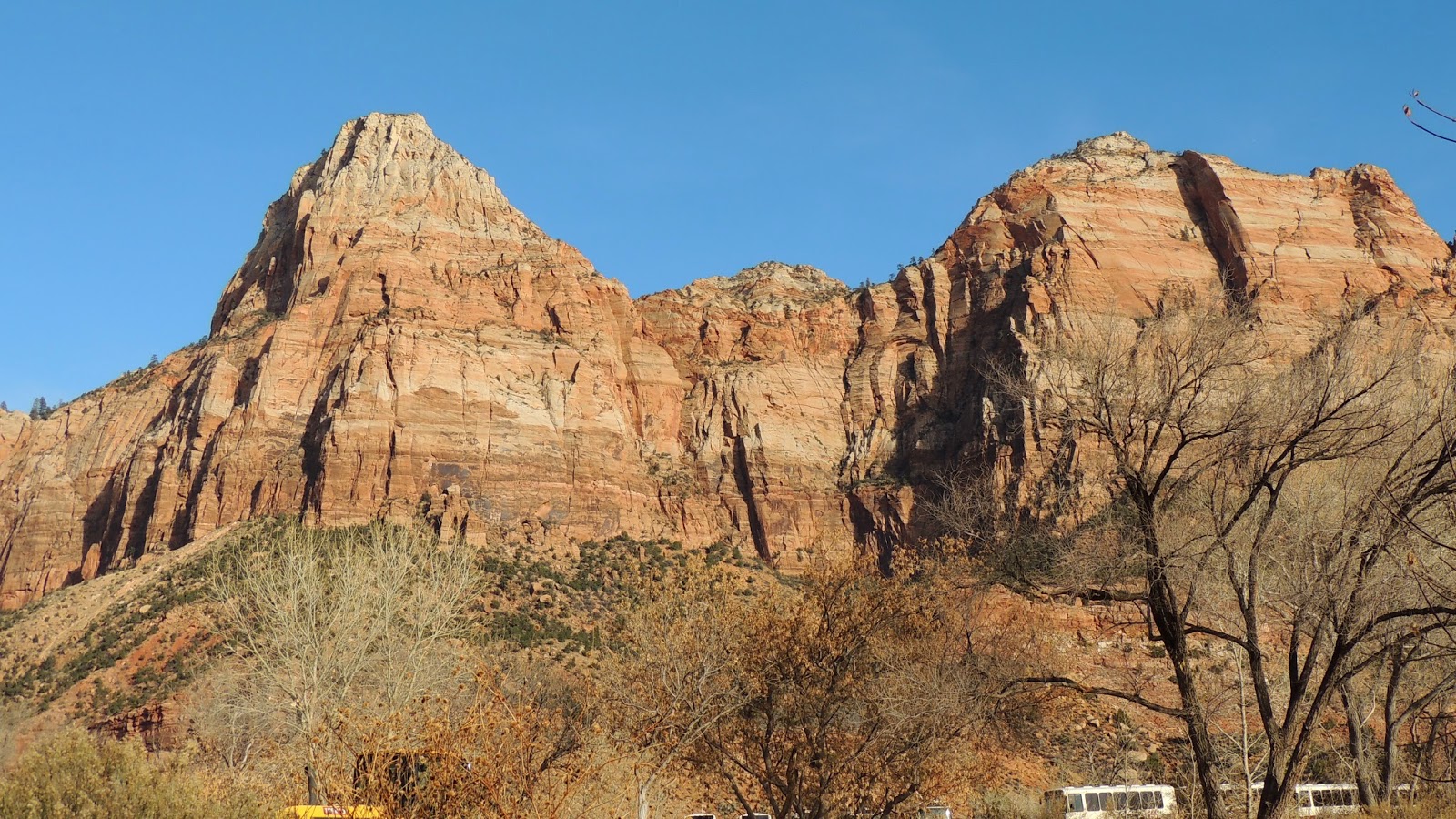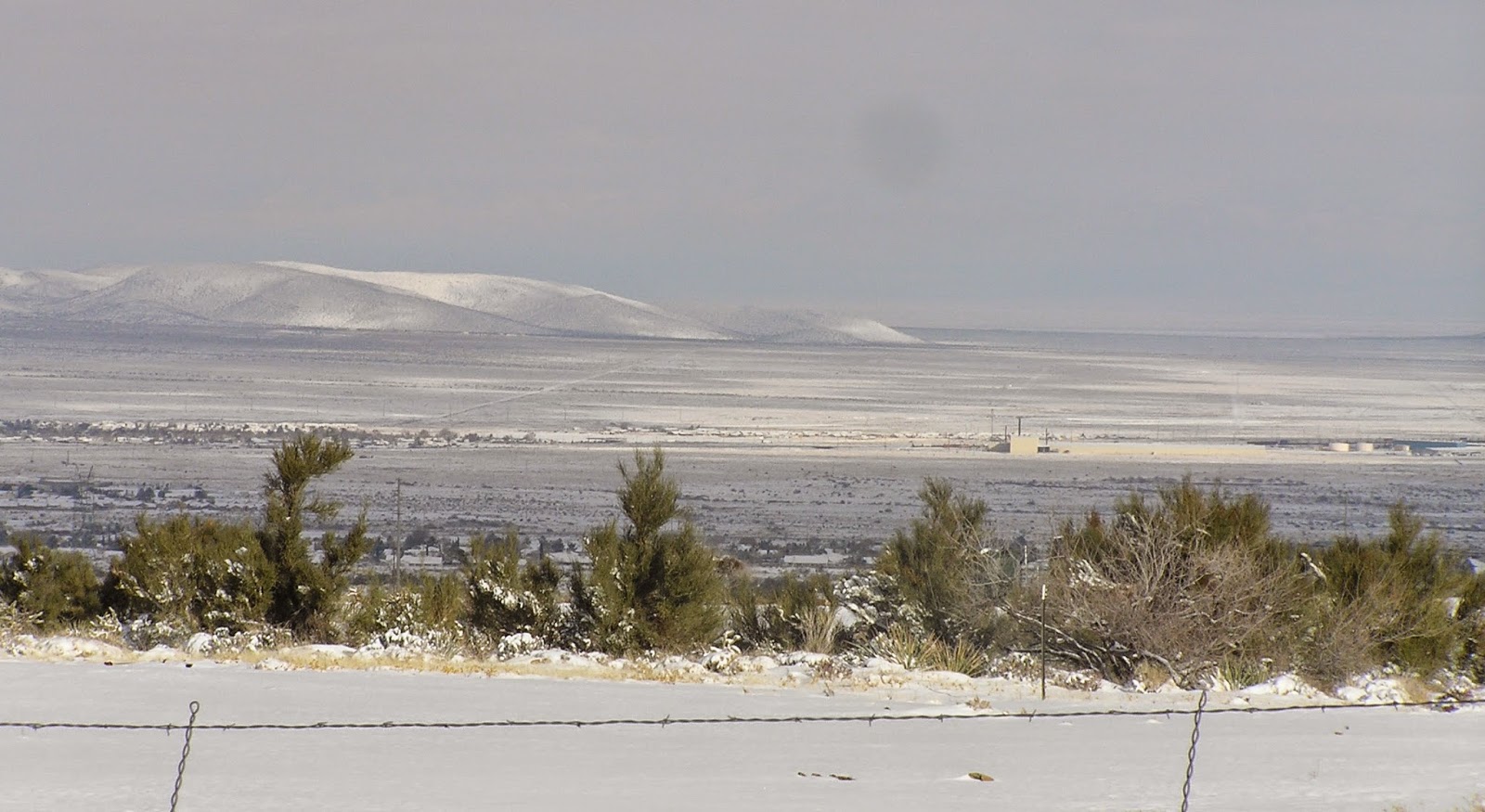We have probably all seen these monument mountains in films, magazines, and other media, but did you know that they are not in the good ol' USA?
They are on Navajo land! This land was set aside in 1868 as the Navajo Reservation with additional land being added in 1884 and 1933. No one knows when the first Navajo settlement was established here - but it was
long before the white man came I assure you!
Before the Navajo, though, the Anasazi (also known as Ancestral Puebloan's) established more than 100 known sites here, and ruins date back to before 1300 A.D. They abandoned this area and other sites such as Mesa Verde in the 1300's.
The Navajo regarded this place, Tse' Bii' Ndzisgaii, as a huge hogan (traditional Navajo home). They considered Gray Whiskers and Sentinel pinnacles as the door posts, and the two "Mittens" buttes (those on the left of the photo above) as the hands of their god.
In the mid-1920's a couple of folks set up a trading post (which is still there and selling to tourists!) They hung in there through the Depression that followed the stock market crash of 1929 and two major droughts that drove out a lot of settlers, but they were seriously hurting for money. A traveler happened to mention that Hollywood was looking for a location in which to shoot a Western. Harry Goulding and his wife Mike (not a typo) hired a photographer and put together a photo album of Monument Valley. In 1938, they moseyed on over to Los Angeles, plopped down in that movie studio and said they'd stay there until someone could see them. And the rest, as they as, is history. (Talking about creating your own customer base!!)
Director John Ford began filming
Stagecoach starring a young galoot by the name of John Wayne in 1939 - in Monument Valley. Over the next 25 years Ford made seven more films here. It's been said that these "five square miles have defined what decades of moviegoers think of when they imagine the American West." But it's not just Westerns that have been filmed here:
Easy Rider, Thelma and Louise, Back to the Future III, 2001: A Space Odyssey, Forrest Gump have also been filmed in Monument Valley. Oh! and let's not forget the newest one,
The Lone Ranger.
In 1958, the Navajo Tribal Council established the five square mile Monument Valley tribal park and opened it to tourists. Almost half a million folks from all over the world come here every year. (Again with the customer base!) Monument Valley itself actually covers 91,000 acres in Utah and Arizona.
These are the traditional homes of the Navajo. The large one on the left is for the man, the one on the right is for the family. I wonder if the small one on the far right is for ... the dog??
How would you like to have that scenery for your backyard?!

Even with the tourism that the Navajo encourage, about half of them live below the poverty level. Thirty-two percent don't even have complete plumbing in their homes. You know, sometimes folks realize that they don't need all of what the majority of us consider necessities. There are more important things in life - like freedom to live a simple life. As of 2009, the Navajo ran about 80,000 head of cattle, 35,000 horses, and managed almost 200,000 sheep and goats. No chance of them starving to death. They have grown crops since the beginning of their existence here, and this seemingly barren valley is on top of an aquifer which allows them to grow those crops.
Most of today's Navajo live in modern housing (though we saw many of those homes had a hogan built nearby.) Those hogans actually maintain a temperature 25% warmer/cooler than the outside temperature. We could learn a lesson from that if we were still building our own homes instead of hiring it done. Almost all of them own their own cars and over half have a high school education or better. Even more interesting to me is that 83% of them still speak their native language. THAT is cool! (Ever heard of the World War II Wind Talkers?)
And here's Granpa, listening to the wind!
 Turning 180 from the last picture in yesterday's blog post you can see how we drove into - and therefore can drive out of - this box canyon. At our feet is the Virgin River.
Turning 180 from the last picture in yesterday's blog post you can see how we drove into - and therefore can drive out of - this box canyon. At our feet is the Virgin River.






.JPG)
.JPG)














.JPG)
.JPG)
.JPG)








.JPG)




.JPG)







.JPG)




